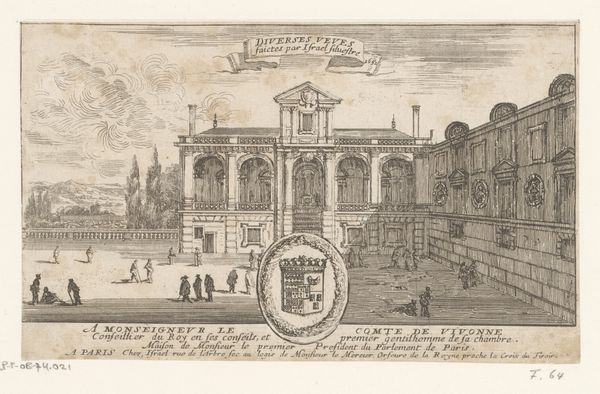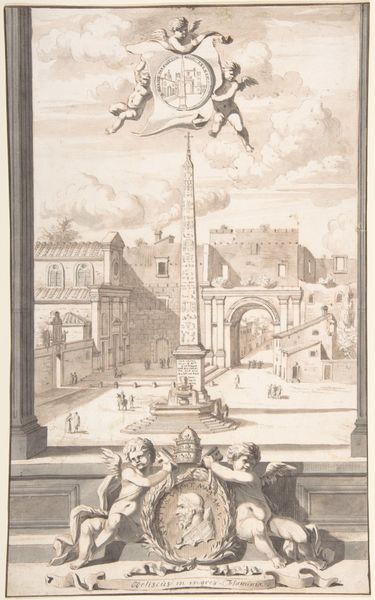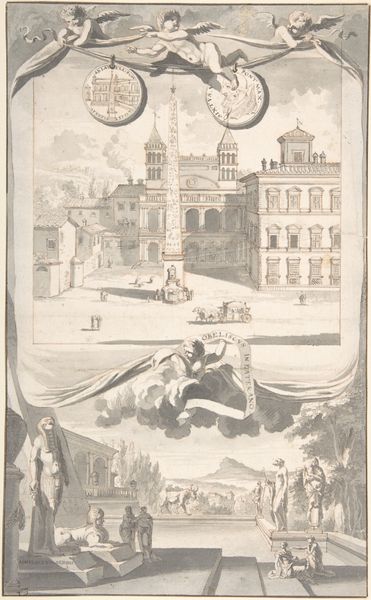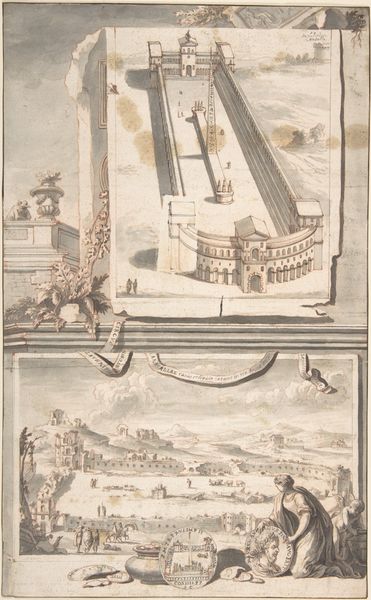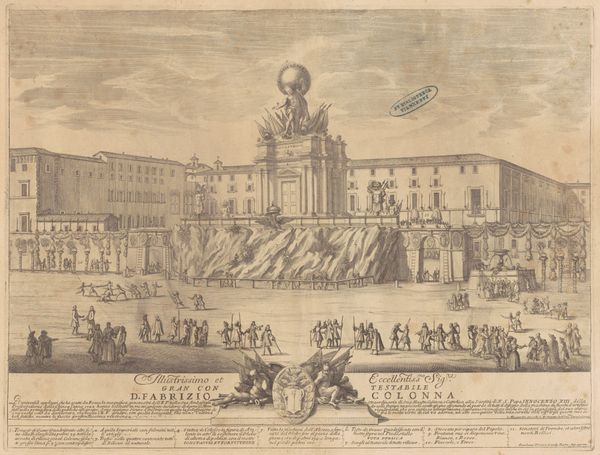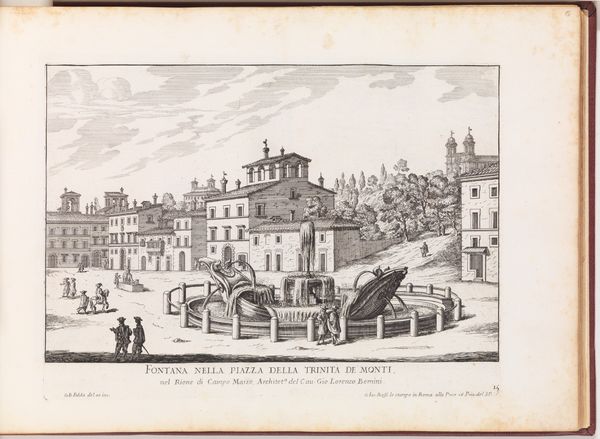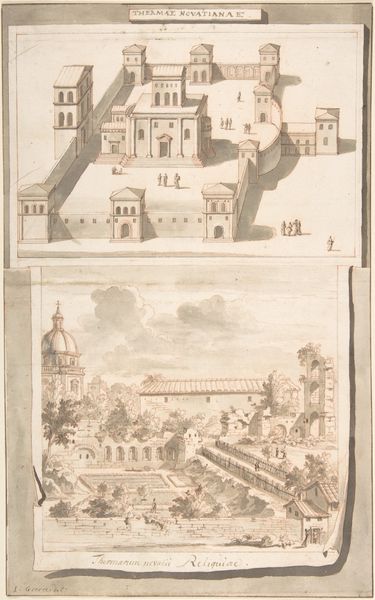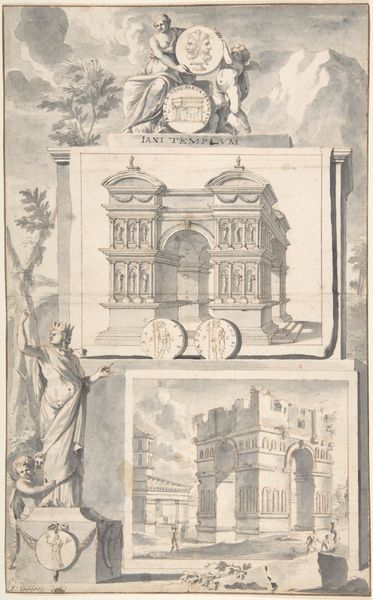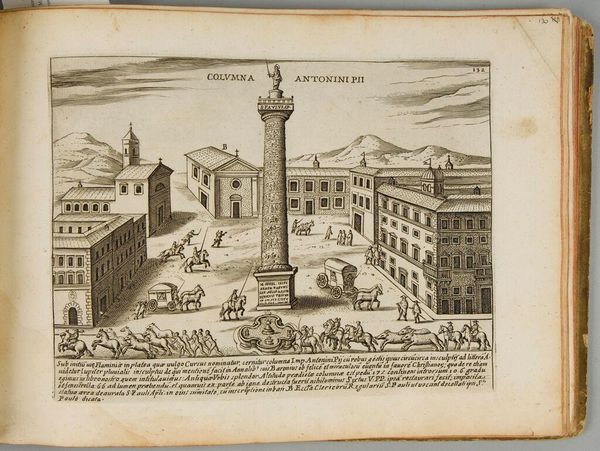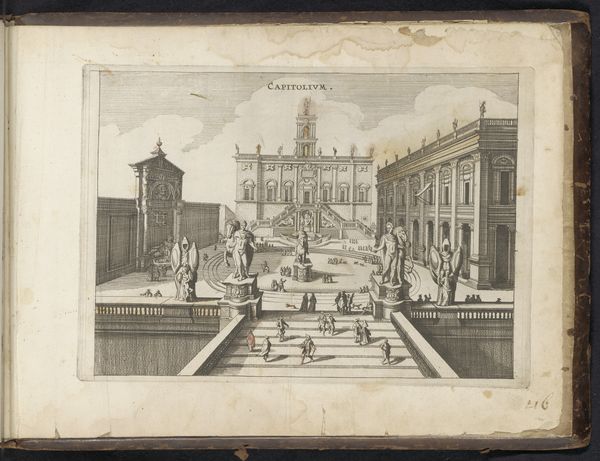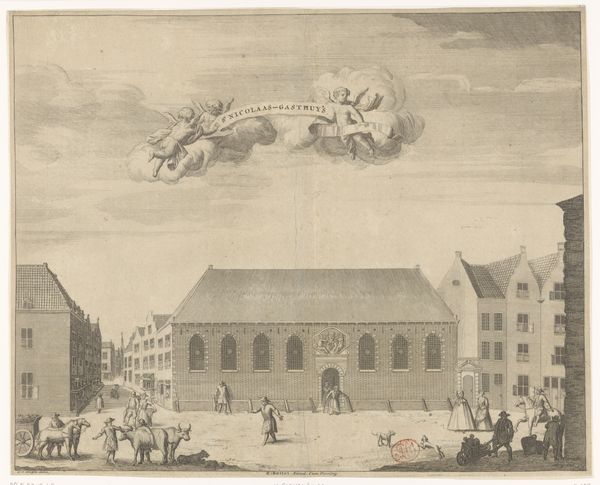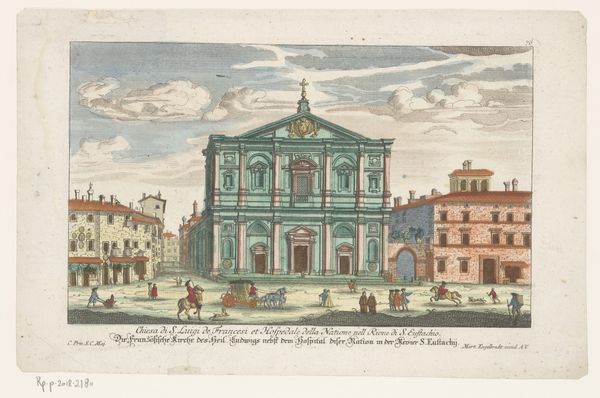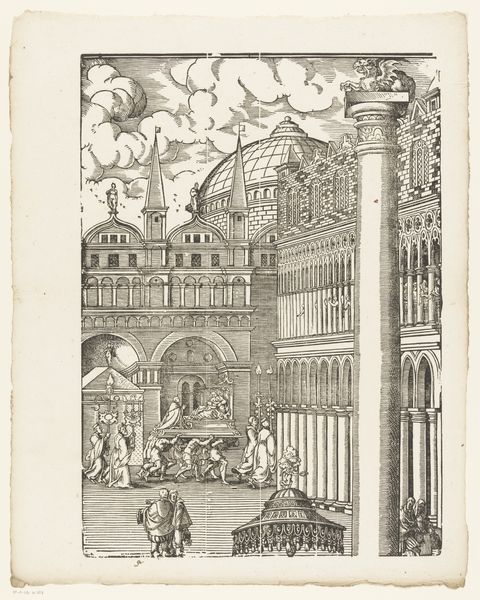
The Sacerdotal Atrium in Perspective 1690 - 1736
0:00
0:00
drawing, print, etching
#
drawing
#
baroque
# print
#
etching
#
landscape
#
cityscape
Dimensions: 11 13/16 x 7 1/16 in. (30 x 18 cm)
Copyright: Public Domain
Curator: Johann Melchior Füssli's etching, "The Sacerdotal Atrium in Perspective," created sometime between 1690 and 1736, presents us with a fascinating cityscape, now housed at the Metropolitan Museum of Art. Editor: Well, my first thought is... it feels a little chilly! Something about the pale washes and precise lines. It’s beautiful, don't get me wrong. But it also kind of architectural and reserved. Curator: It’s interesting you pick up on that reserve. Think about the era; the Baroque period. Even cityscapes reflected the rigid social hierarchies and the Church's pervasive influence. That theatrical space of the atrium, designed for ritualistic display. Note how the people are positioned. Editor: Almost like chess pieces, carefully arranged to demonstrate power? They do look like they're enacting some kind of elaborate performance rather than just walking around! What strikes me, though, is the contrast between that meticulous foreground activity and the smoky, indistinct background, adding to the overall... distance. Curator: Precisely! And look closer at the printmaking technique. The use of etching allows for very fine lines, creating depth, but also a clear sense of separation between the elements within the space. It reflects the enlightenment’s fascination with scientific precision, married with a deep engagement with spatial hierarchies. What does it mean to arrange this space "correctly," for God, for power? Editor: It makes me think about surveillance, about being watched. Is everyone facing forward, facing up to the institution? Maybe the cool mood is one of quiet submission, a society measured against an abstract set of moral and architectural plans? I am just riffing, of course. Curator: Not at all! You’re touching on power dynamics, viewership, the very act of seeing itself. The artist isn't just presenting a building; they're presenting a carefully constructed ideology embedded within a built environment. Consider how this etching circulated and what type of consumption was meant. This piece serves as propaganda of faith, power, and structure. Editor: Right! And even today, it’s still triggering thoughts, still causing friction between our impressions and our interpretations. Maybe the chilly feeling comes from feeling just a little controlled even now!
Comments
No comments
Be the first to comment and join the conversation on the ultimate creative platform.
